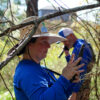Which Tree Should You Plant?
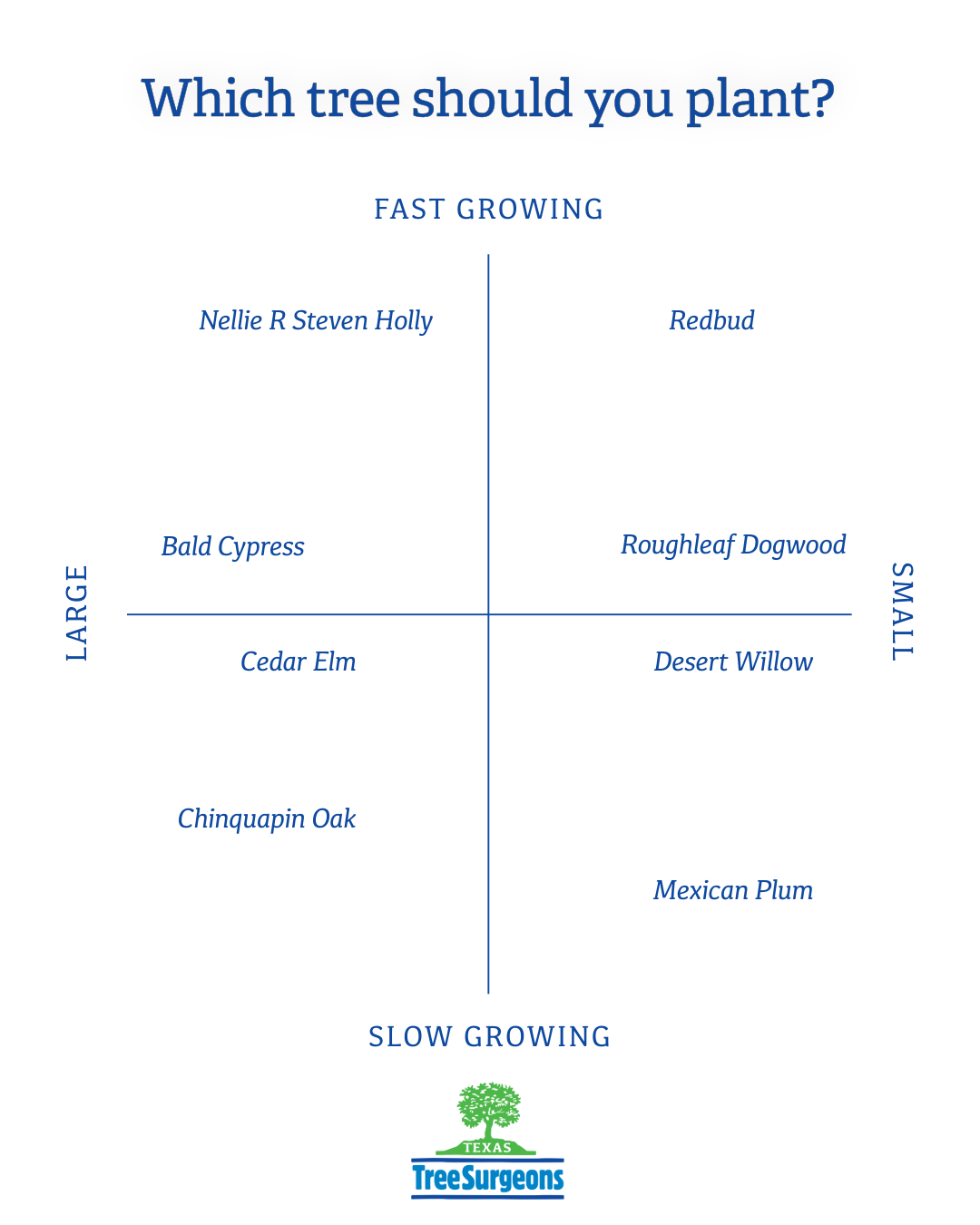
Tree selection needs to include a balance of preference in style with species selection that can thrive in North Texas unique soil conditions and climate. Below are some essential questions to ask yourself to ensure your chosen trees thrives on your property.
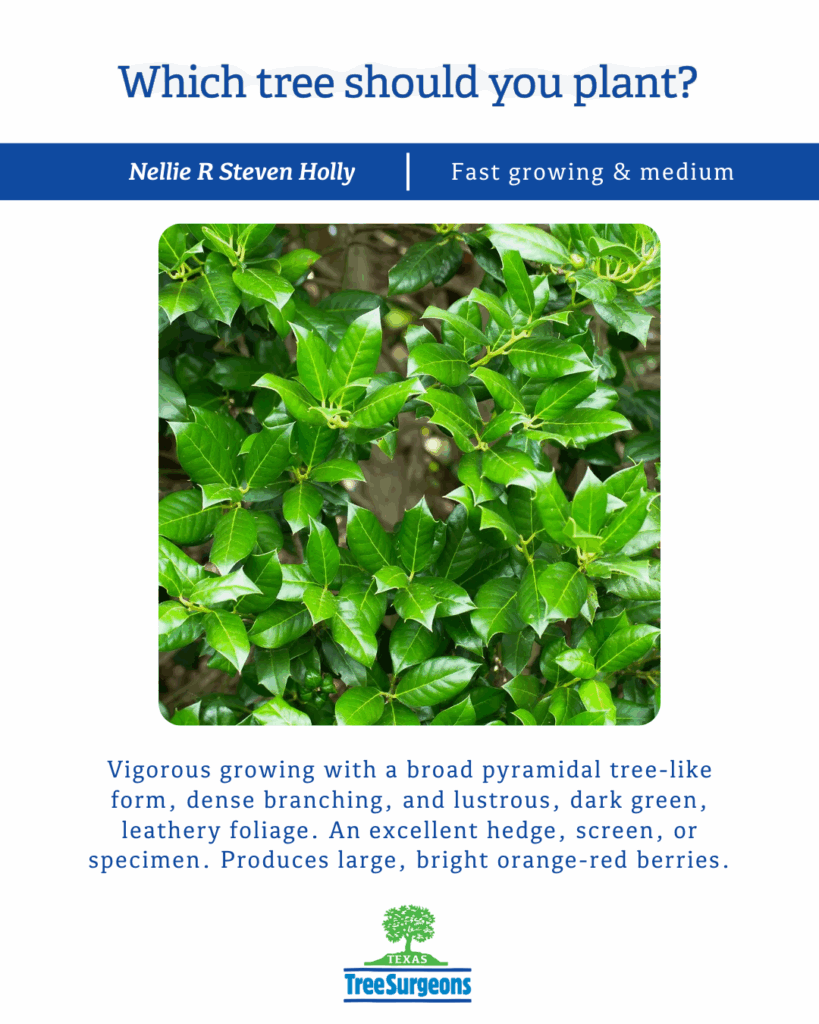
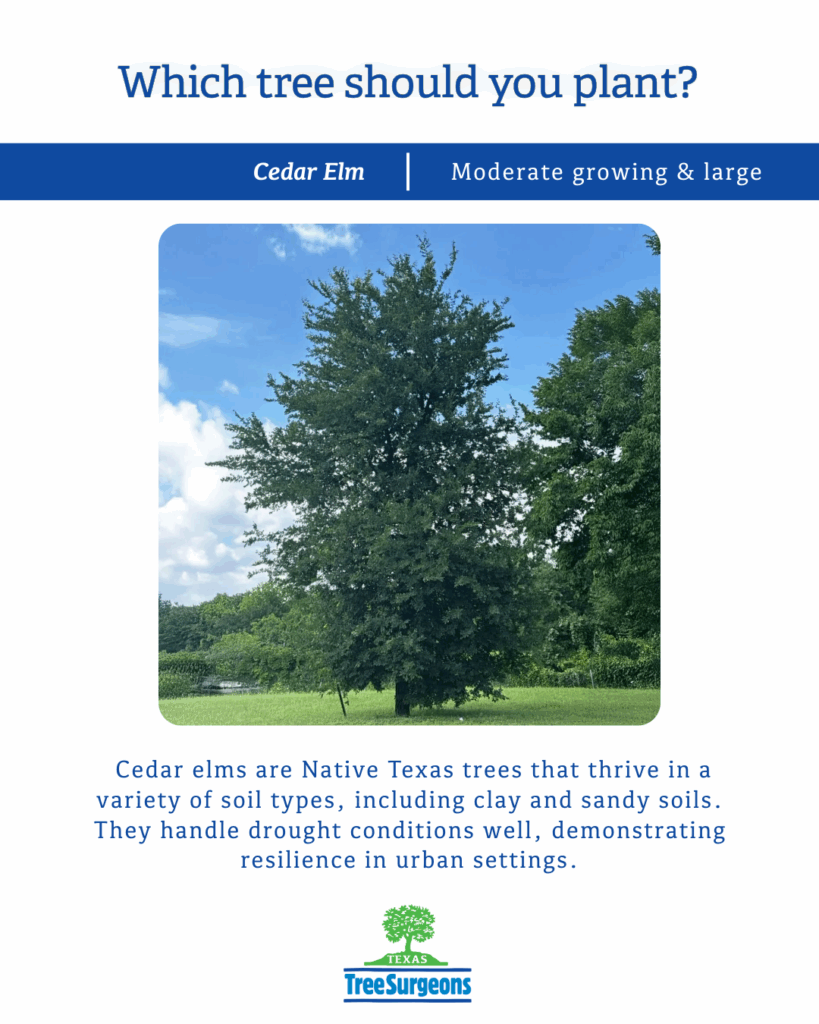
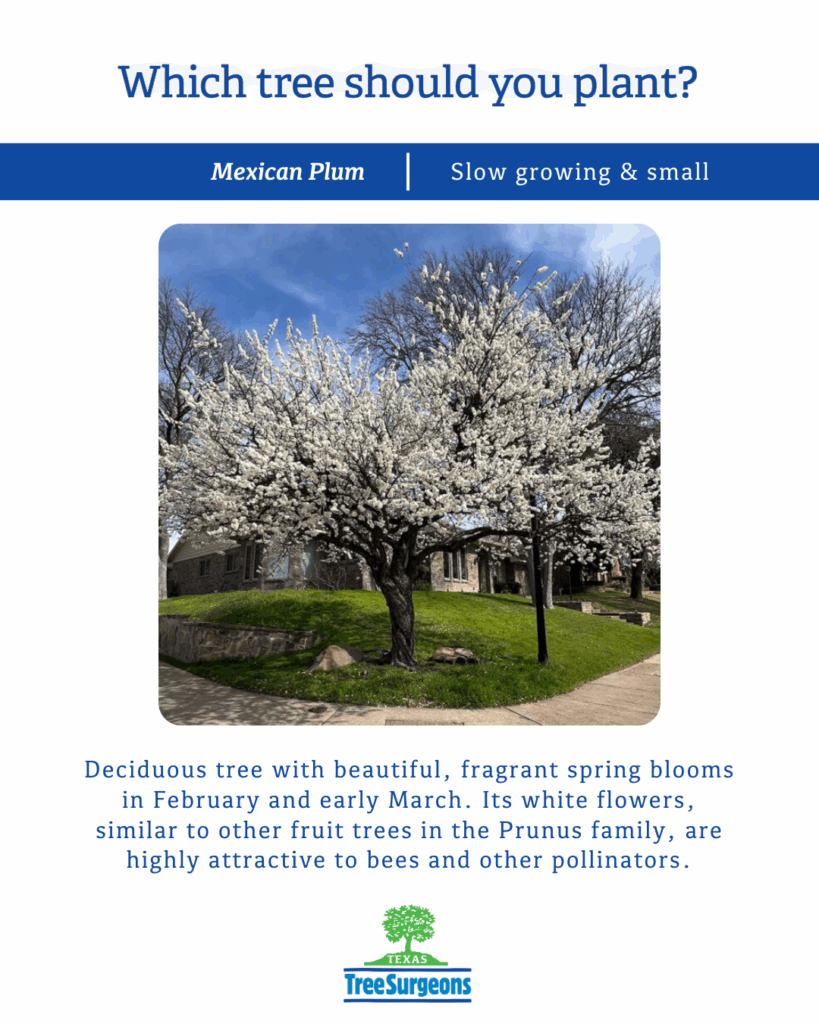
What Is the Purpose of Planting This Tree?
Whether it’s for shade, privacy, or aesthetics, knowing your primary goal will significantly influence the type of tree you choose. For instance, large shade trees like the Chinquapin oak can provide excellent cover from the sun, while ornamental species such as the Mexican plum add beautiful flowers each spring.
Beyond the immediate purpose, it’s also valuable to consider any long-term goals for your landscape. Are you interested in creating a habitat for local wildlife? Or are you in need of extra privacy quickly, and need a something like a Nellie R Steven Holly that can grow dense branches.
How Much Space Is Available?
Consider the mature size of the tree and ensure it fits well within your available space without encroaching on buildings, power lines, or other plants. Planning for future growth is key to avoiding issues down the line. The Monterrey Oak is a stunning tree but can expand to a wide canopy that may not be suitable for small yards. Similarly, the Cedar Elm could fit better in more confined spaces due to its more upright growth. Don’t forget about the root system, as certain species have roots that can interfere with foundations or sewer lines.
Additionally, assess the specific location within your space where the tree will be planted. Is it close to other plantings or structures? Does it have enough room for the root system to spread? Trees like the Bald Cypress can adapt to various environments but require sufficient room for root growth. Ensuring the right spatial conditions will allow your tree to flourish without causing challenges for other garden elements.
What Are the Soil Conditions Like?
In North Texas, soil conditions can vary greatly. It’s essential to understand your soil type and drainage capacity to select a tree that will thrive in your garden’s specific conditions. The Blackland Prairie and Cross Timbers are known for their clay soils, which might pose challenges for drainage but are quite fertile. Trees like the Bur Oak are well-suited for thriving in these kinds of soils. Soil testing prior to planting can provide valuable insights into pH, nutrient levels, and overall health, enabling better tree selection.
You might also consider how the soil’s condition will change over time. Compaction, runoff patterns, and even seasonal variations influence how well your chosen tree will grow. Some species like Cedar Elm thrive in a variety of soil types, including clay and sandy soils, making them adaptable. Investing time in preparing your soil could open up your options significantly and provide a healthier environment for your new tree.
How Will the Climate Affect the Tree?
North Texas experiences hot summers and occasional cold snaps. Choosing a tree that can withstand these climatic variations will ensure it remains healthy throughout the year. Species like the Mexican Sycamore are particularly drought-tolerant and can handle the sweltering heat, while others, like the October Glory Maple offer vibrant autumn colors. Understanding the typical weather conditions and how they fluctuate throughout the year helps in deciding which trees are most appropriate for the local climate.
Moreover, consider microclimates within your own property, as these can differ significantly from general regional conditions. Areas sheltered from wind or with less sun exposure might support species that others cannot endure. By matching tree selection with the nuanced microclimates in your garden, you increase the likelihood of success, extending the potential for a lush, thriving landscape.
What Is the Tree’s Water Requirement?
Different trees have different water needs. Consider the availability of water in your area and your willingness to provide supplemental watering, especially during dry spells. For instance, the Desert Willow is a resilient choice for xeriscaping, requiring minimal water once established. Think about the local climate conditions, including recent drought patterns, and align your tree choices with the reality of water accessibility and potential restrictions.
Infrastructure, too, plays a role in determining water availability. Do you have an irrigation system in place, or are you relying on natural precipitation?
Is the Tree Susceptible to Local Pests and Diseases?
Common pests and diseases in your region could affect your chosen tree. For example Ash tree’s are susceptible to EAB. Selecting a disease-resistant species can save you time and effort in the long run. Fore example not all oaks trees are affected equally from oak wilt. By consulting regional arborists you can stay informed about potential threats and adapt your choices accordingly.
What Is the Maintenance Level?
Some trees require more ongoing care than others. Consider the amount of maintenance you are willing to commit to, including pruning, fertilization, and pest control. The Crape Myrtle demands more frequent attention due to several diseases and insects that disrupt its health.
Occasionally, the lifespan and growth rate of a tree could alter maintenance needs over time. It’s essential to gauge your personal commitment level and match it to the tree’s specific requirements, ensuring both you and your garden remain happy and healthy.

At Texas Tree Surgeons we love trees. We offer turnkey tree planting services for residential, commercial, and municipal clients across North Texas. Our program includes professional tree selection, delivery, and planting. We specialize in installing medium to large shade trees and small ornamental species suited to North Texas. Ready to add to our urban forest?
Related Blogs
Similar blogs related to this topic
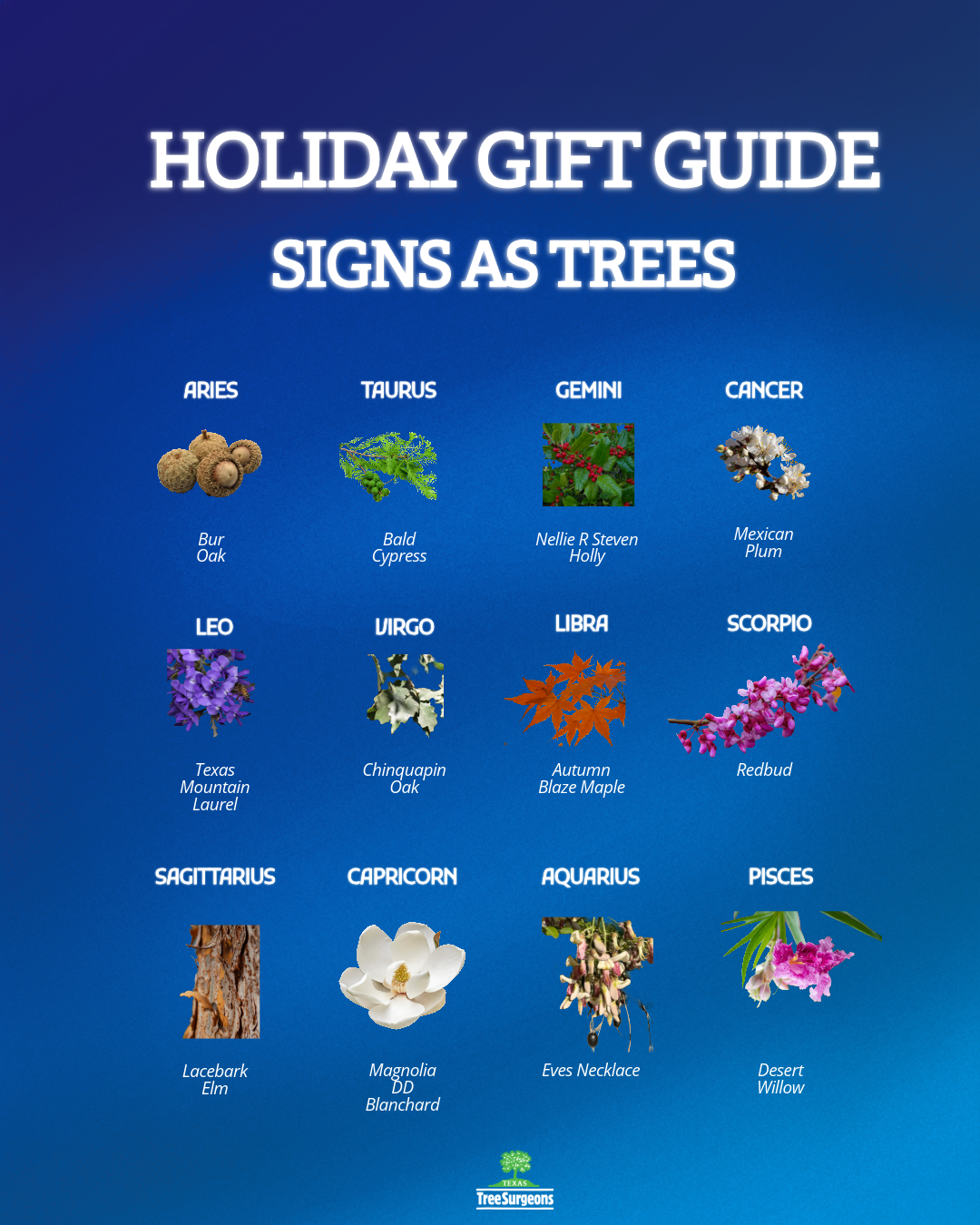
Holiday Gift Guide, Zodiac Signs as Trees
This holiday season a gift that keeps on giving in a time of over consumption is the most ethical and thoughtful gift. It is investment in a shared future that benefits their home and the…
Read more
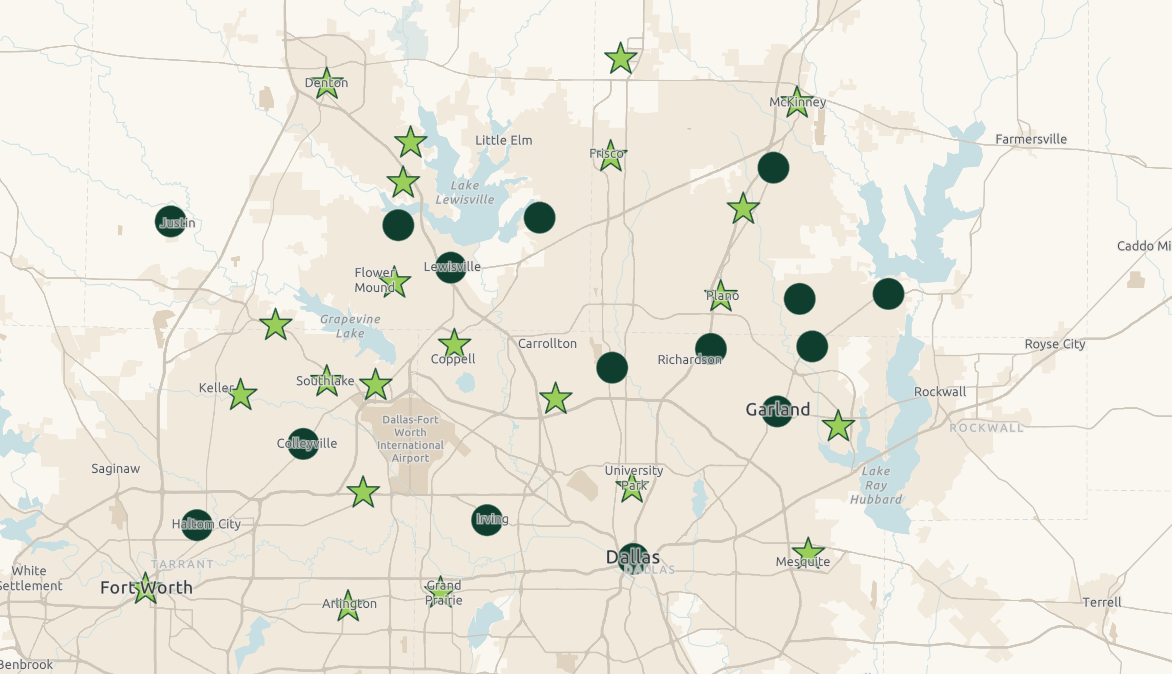
Benefits of Becoming a Tree City USA in Texas
In recent years, many Texas communities are exploring how to achieve Tree City USA. Tree cities reap numerous advantages, ranging from environmental to social benefits, enhancing the lives of their residents. What are the perks…
Read more
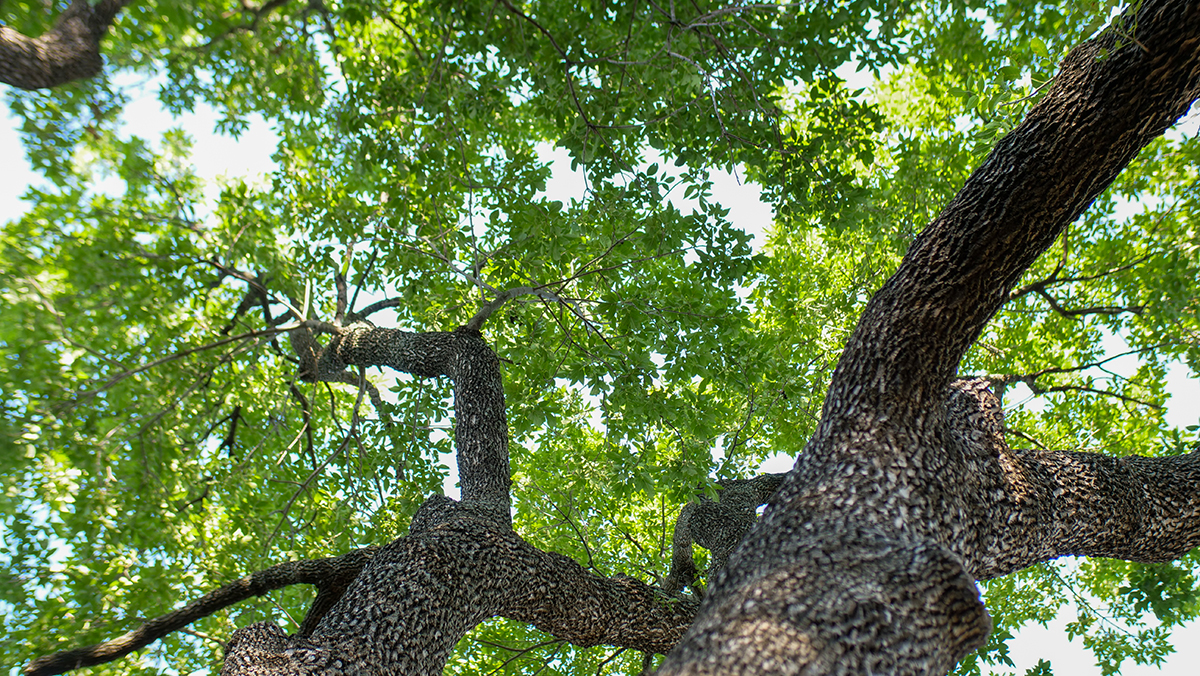
How to Become a Tree City USA —and Why It Matters
Earning the designation of Tree City USA is more than just an honor. It’s a statement that your community values trees, sustainability, and quality of life. Across the country, more than 3,200 communities—from small towns…
Read more